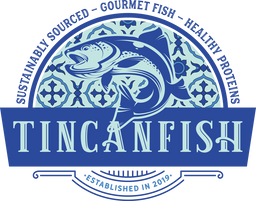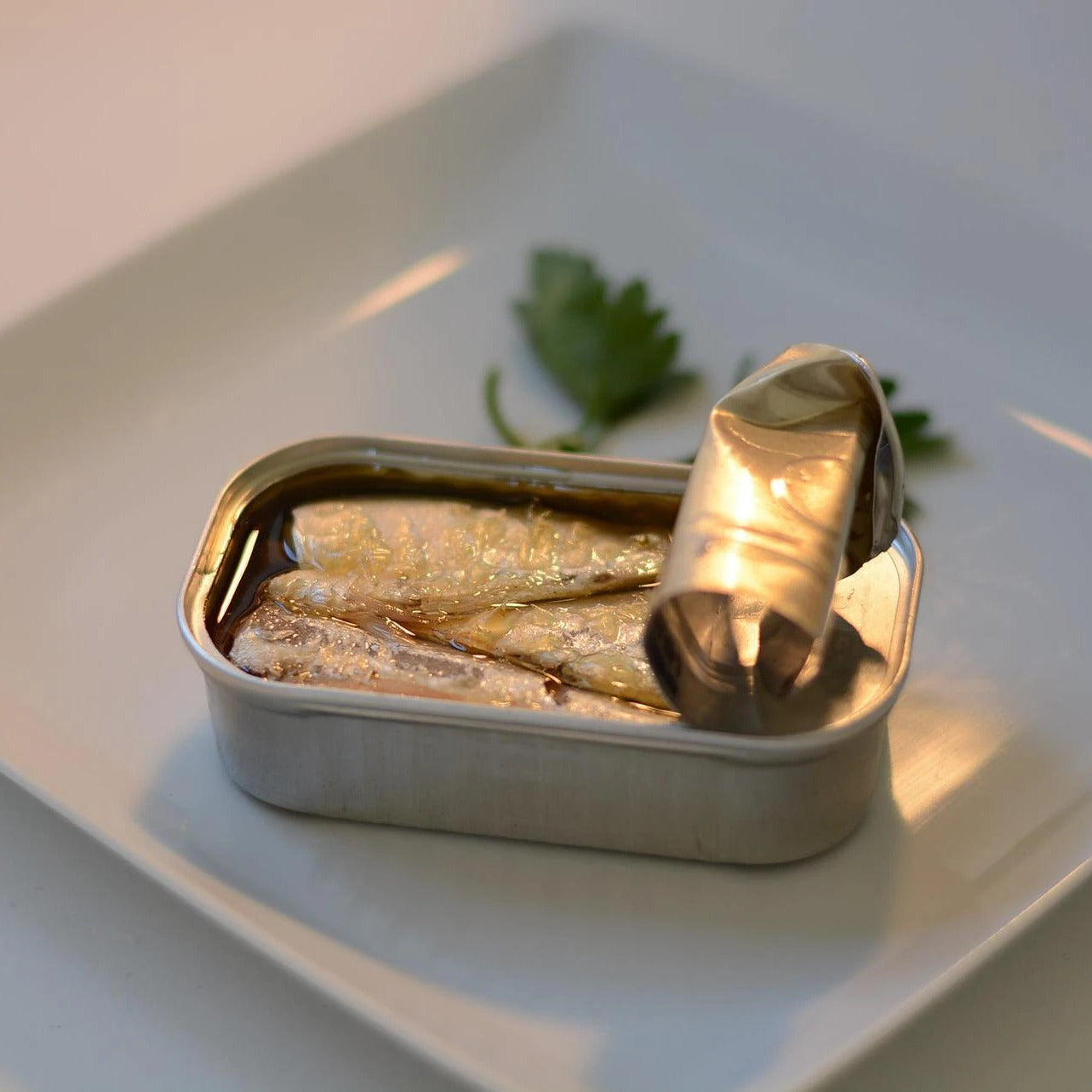It’s easy to picture the Spanish coastline as a narrow strip of sand and sangria, but the seafood industry is a massive part of the country’s economy! Fresh caught fish and shellfish decorate many menus and tables, but the seafood is often prepared and canned as “conservas” — which literally means “conserved” in Spanish. For many Americans, “canned fish” takes you back to the horror of a tuna fish sandwich at a middle school lunch table. And while we’re huge fans of tuna (especially sustainably caught tuna), there is a world of flavor and texture awaiting any canned seafood novice.
Let’s also settle one giant (often American) misconception: canned seafood is not gross! In fact, making conservas is an artisanal practice that dates back centuries. The fish are caught sustainably, cooked and flavored to perfection, and then preserved at peak quality. Conservas make a gourmet (and healthy) treat at any time of the year. Needless to say, we have plenty to learn from the Spaniards. If you’re curious, start here with our guide to Spanish mussels, sardines, and more!

Mussels
The prospect of eating shellfish might leave you shell-shocked at first. But, before you jump into slurping down raw oysters, mussels make a great introduction to the world of bivalves. The classic Spanish mussel comes from the northwest province of Galicia, where people have been enjoying the delicacy for centuries. The environmental conditions of the Galician coast provide a premium mussel habitat. The shellfish grow rapidly and plentifully throughout the sheltered bays.
How to Eat Mussels?
Classically canned in a paprika and olive oil escabeche sauce, you can also find them preserved in water or plain olive oil. Depending on your recipe, you might enjoy the flavor of the escabeche or prefer mussels that will take on the profile of your cuisine. If you’ve never tried mussels before, they have a subtle, mild flavor and a tender texture that falls between a chewy clam and a gooey oyster.
Sardines
For some reason, they have a bad reputation, but they might be the best-kept secret of the Iberian peninsula. Sardines are small, oily fish that live in large schools around the world’s oceans. Compared to some larger fish, sardine populations grow quickly and steadily, making them a more sustainable seafood option. Additionally, they are caught with seine nets, avoiding any bycatch or impact on the ocean floor. You can find intentional, family-run sardine businesses throughout Spain and Portugal. Like many Iberian conservas, brands like Palacio de Orient and Briosa create high-quality, beautifully preserved sardines that you can get anywhere in the world. Check out our selection of sardines at TinCanFish!
Why Eat Sardines?
I’ll paint you a picture. After a long day of work, you arrive home hungry and exhausted. As usual, you find yourself in the classic predicament: you feel too tired to make dinner but you want to avoid unhealthy snack food. Bring on the delicious and nutritious can of sardines. Peel back the lid and scoop out the little fish. Cut them into bite-size pieces, and serve them on top of water crackers with a squeeze of lemon and a sprinkle of flakey sea salt. Voila! A snack that’s rich in protein and packed with omega-3s! They also go great on salads or pasta for a heartier meal. And you can save the oil to make a flavorful salad dressing!
Read more about the environmental and health benefits of sardines!

Mackerel
Mackerel is a meaty white fish that hails from the coastal areas of Spain and Portugal, though some species can be found worldwide. The larger species of mackerel are similar to tuna, but the tiny jack mackerel is more reminiscent of sardines. While the Atlantic mackerel is overfished, the Spanish, King, and Jack mackerel make very sustainable choices.
Learn more about the different types of mackerel!
So Many Ways to Eat Mackerel
Fresh, the fish is often served whole or filleted. The mild flavor pairs well with a rich aioli or spiced up in fish tacos. However, mackerel is a popular choice for conservas! Either canned as fillets like tuna or as individual fish like sardines, canned mackerel is incredibly versatile. Its mild flavor pairs well with nearly any spices and herbs, and the canned fish completes a salad or hors d'oeuvres platter.
Codfish
Cod is a firm, white fish with a health mission. Rich in protein, omega-3 fats, and vitamin B12, anybody can benefit from eating more cod. With a mild flavor, cod is extremely versatile and easy to incorporate into your diet. For fresh cod, try baking it in garlic butter, grilling it with lemon, or adding it to stews and curries. However, cod has been dramatically overfished along the New England coast. Because of this, it can be challenging to find a sustainable source of fresh cod in America.
Canned Codfish for Everyone
While fresh cod might not be an option for everyone, canned cod is popular on a conservas platter. Atlantic cod populations off the coast of Spain are more robust than those on the American coastline. Buying canned cod from these more sustainable sources gives anybody access to a healthy protein source. High-quality brands like Briosa pack the cod fillets in olive oil. This nutrient-dense fish makes a great snack or addition to any meal.

Anchovies
The Cantabrian Sea has more tiny fish to boast about! And boast they shall because anchovies prepared in traditional methods from Spain are a far cry from the divisive salt bombs on pizza. Salt-cured anchovies need a long maturation period followed by a proper wash to perfect the flavor without overwhelming saltiness. Spanish canneries get this process right. After curing, they are sometimes even packed in delectable sauces! Flavorful and fresh, canned anchovies from Spain go perfectly on a crusty slice of bread.
Check out this article for other ideas on how to eat anchovies.

Squid & Octopus
The Spaniards make use of all their seafood, and cephalopods are no exception. Both squid (calamar) and octopus (pulpo) make their way onto tapas platters around the country. Rich in protein, phosphorus, and potassium, eating cephalopods is a great way to get your key nutrients!
Particularly common in the Galicia province, pulpo gallego consists of octopus lightly seasoned with sweet paprika and olive oil, served with potatoes. With a simple can of octopus in olive oil, this recipe would come together in a jiffy at home! Squid also comes in a can and is often preserved in its own ink or with other flavorful sauces. Served alongside a starch of your choosing and with a tomato-based sauce for a perfect Spanish pairing.
Learn how to prepare fresh squid and octopus here!
The Culture of Conservas
Ever since the first fish canneries were established in Spain in 1879, conservas have become a point of pride and a symbol of taste for Spanish culture. Not only can you transport yourself to a Spanish tapas bar by opening a can of seafood at home, but you can also rest easy knowing sustainably canned fish has less of an impact on sea life. Be sure to check out the selection of canned seafood we have at TinCanFish!


